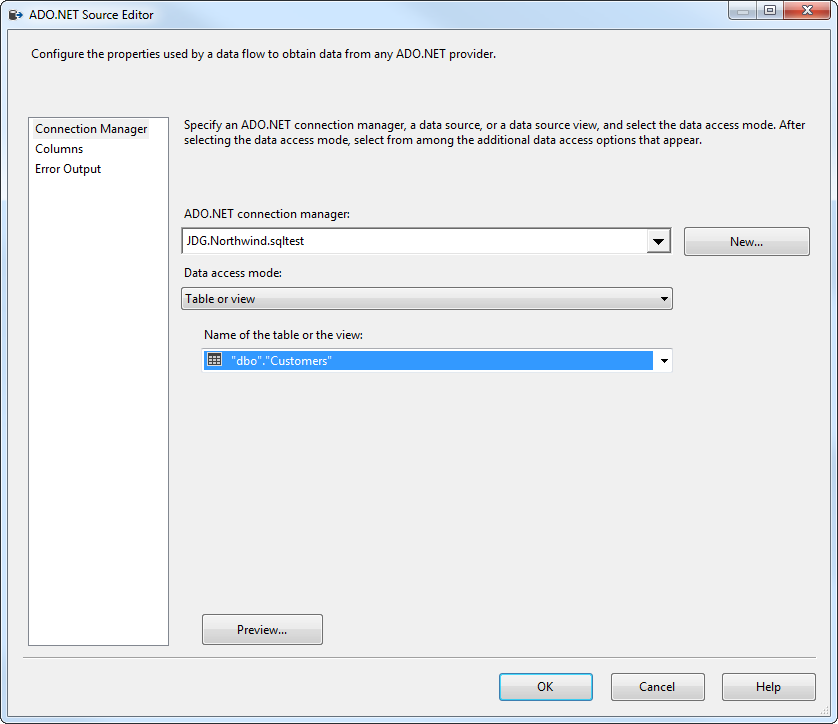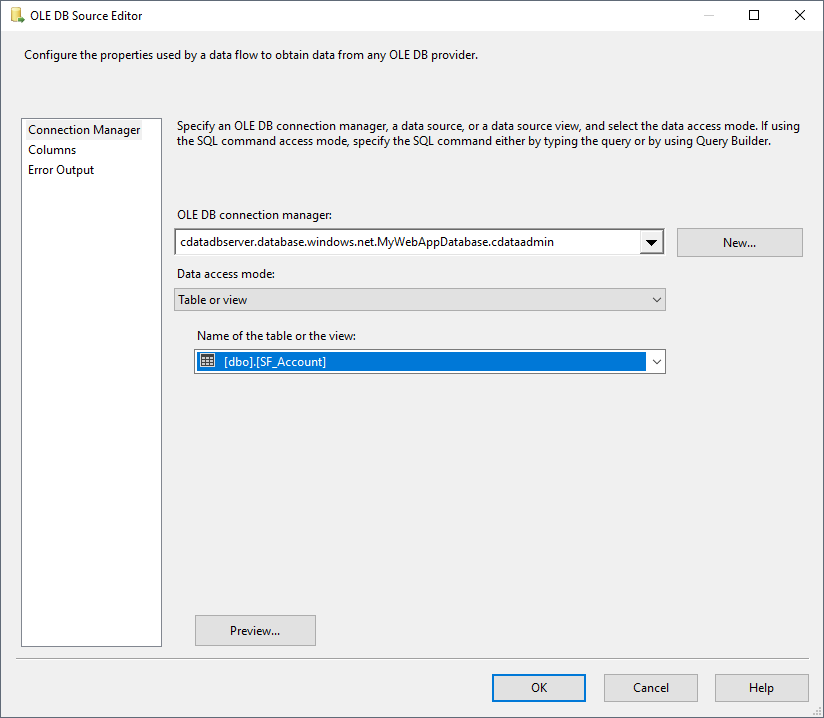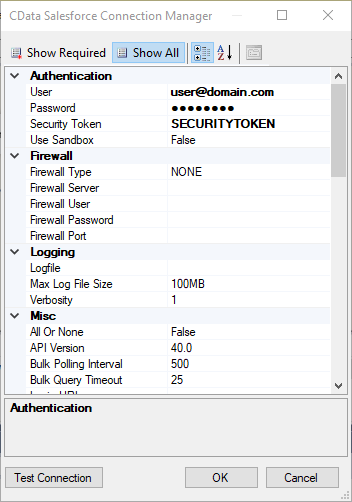Discover how a bimodal integration strategy can address the major data management challenges facing your organization today.
Get the Report →Export Data from SQL Server to Microsoft Planner through SSIS
Easily push SQL Server data to Microsoft Planner using the CData SSIS Tasks for Microsoft Planner.

SQL Server databases are commonly used to store enterprise records. It is often necessary to move this data to other locations. The CData SSIS Task for Microsoft Planner allows you to easily transfer Microsoft Planner data. In this article you will export data from SQL Server to Microsoft Planner.
Add Source and Destination Components
To get started, add a new ADO.NET Source control and a new Microsoft Planner Destination control to the data flow task.

Configure the ADO.NET Source
Follow the steps below to specify properties required to connect to the SQL Server instance.
- Open the ADO.NET Source and add a new connection. Enter your server and database information here.
- In the Data access mode menu, select "Table or view" and select the table or view to export into Microsoft Planner.
- Close the ADO NET Source wizard and connect it to the destination component.

Create a New Connection Manager for Microsoft Planner
Follow the steps below to set required connection properties in the Connection Manager.
- Create a new connection manager: In the Connection Manager window, right-click and then click New Connection. The Add SSIS Connection Manager dialog is displayed.
- Select CData MicrosoftPlanner Connection Manager in the menu.
-
Configure the connection properties.
You can connect without setting any connection properties for your user credentials. Below are the minimum connection properties required to connect.
- InitiateOAuth: Set this to GETANDREFRESH. You can use InitiateOAuth to avoid repeating the OAuth exchange and manually setting the OAuthAccessToken.
- Tenant (optional): Set this if you wish to authenticate to a different tenant than your default. This is required to work with an organization not on your default Tenant.
When you connect the Driver opens the MS Planner OAuth endpoint in your default browser. Log in and grant permissions to the Driver. The Driver then completes the OAuth process.
- Extracts the access token from the callback URL and authenticates requests.
- Obtains a new access token when the old one expires.
- Saves OAuth values in OAuthSettingsLocation to be persisted across connections.
Configure the Microsoft Planner Destination
In the destination component Connection Manager, define mappings from the SQL Server source table into the Microsoft Planner destination table and the action you want to perform on the Microsoft Planner data. In this article, you will insert Tasks entities to Microsoft Planner.
- Double-click the Microsoft Planner destination to open the destination component editor.
- In the Connection Managers tab, select the connection manager previously created.
-
In the Use a Table, menu, select Tasks.
In the Action menu, select Insert.
![The destination table and action to be performed.]()
-
On the Column Mappings tab, configure the mappings from the input columns to the destination columns.
![The mappings from the SQL Server source to the SSIS destination component.]()
Run the Project
You can now run the project. After the SSIS Task has finished executing, data from your SQL table will be exported to the chosen table.









